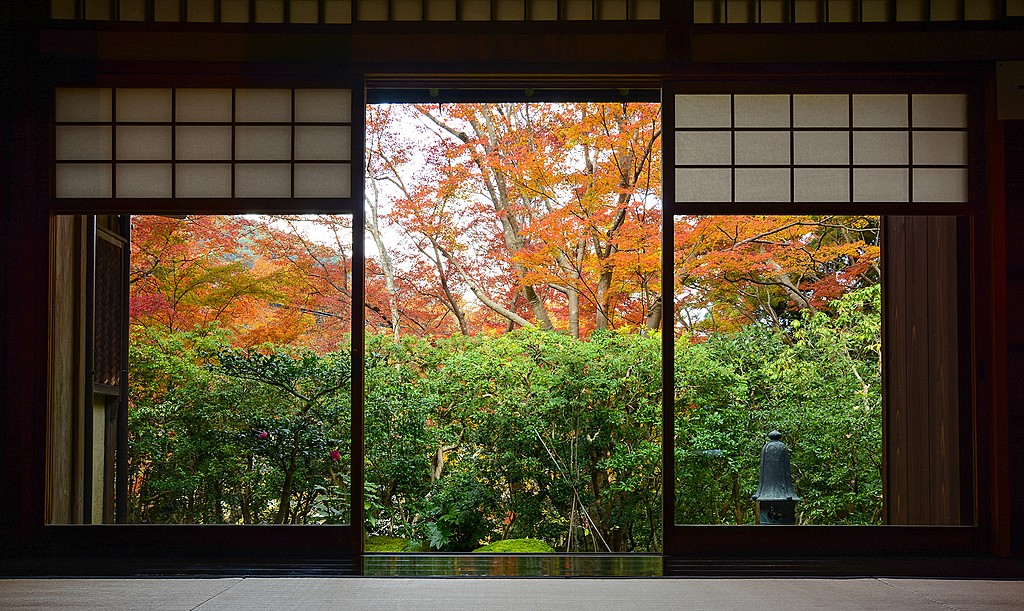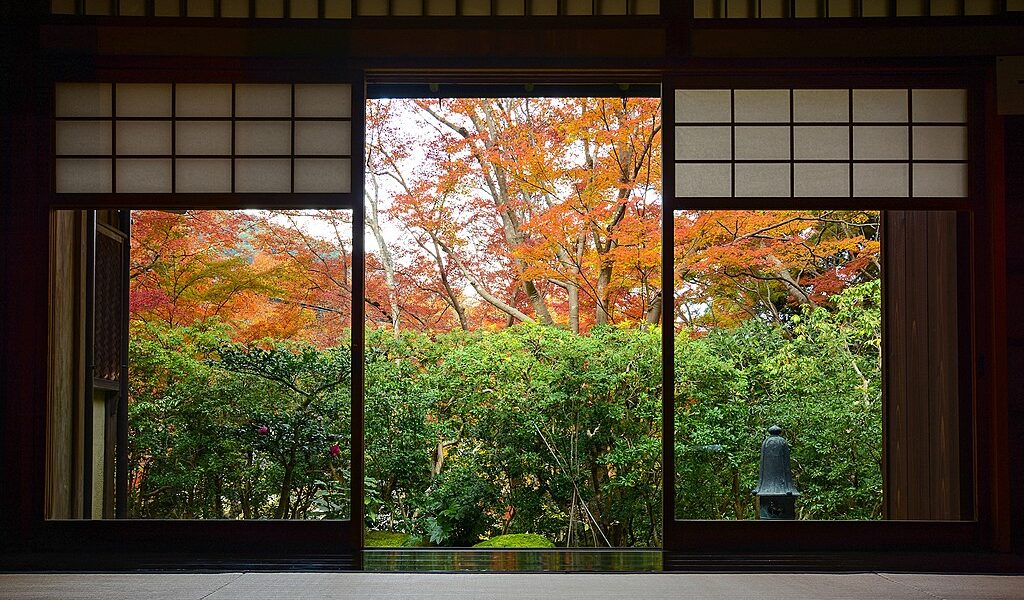
Only in Japan can you bunk in a Buddhist temple one night and rent your own sleeping pod the next. High-tech Japan lovingly reveres its cultural traditions—making for the best kind of culture shock. Enjoy this dynamic country with a range of unique overnight options.
## Delve Deeper: Unique Lodging Options Beyond Hotels in Japan
Japan, a land of captivating contrasts, offers a travel experience unlike any other. Beyond the sleek, modern hotels that dot its bustling cities, lies a realm of unique and traditional lodging options, each offering a distinct glimpse into the nation’s rich culture and history. Forget the generic hotel room; immerse yourself in the heart of Japan with these unforgettable stays.
## Soak in a Hot Bath at a Traditional Ryokan: A Journey into Japanese Hospitality
Imagine stepping back in time, enveloped in the soothing embrace of Japanese tradition. This is the essence of a *ryokan*, a traditional Japanese inn with roots stretching back to the 8th century. These establishments are more than just places to stay; they are gateways to experiencing the authentic heart of Japan. Often, a *ryokan* is intrinsically linked to local hot springs, known as *onsen*, natural geothermal wonders that are abundantly scattered throughout the island chain of Japan. These *onsen* offer not just relaxation, but also purported health benefits, making them an integral part of the *ryokan* experience.
Upon arrival at a *ryokan*, guests are immediately immersed in an ambience reminiscent of old-world Japan. The interiors are typically minimalist, featuring warm wood accents, graceful sliding paper doors, and the simple elegance of tatami mats. These design elements create a serene and uncluttered atmosphere, conducive to relaxation and reflection. While some *ryokan* boast histories spanning centuries, they certainly don’t compromise on modern comforts. Guests can anticipate the nightly ritual of having their futon meticulously rolled out, ensuring a restful night’s sleep. They will also find a traditional linen *yukata* robe awaiting them, perfect for lounging in after a rejuvenating bath.
Beyond the shared thermal bathing facilities, a cornerstone of the *ryokan* experience, the private bathrooms within the rooms are often surprisingly high-tech. Be prepared to encounter sophisticated toilet control panels, complete with a symphony of sound effects and warm-water bidets, a testament to Japan’s innovative spirit. While a stay at a *ryokan* can be a luxurious experience, it doesn’t necessarily require a hefty price tag. Even budget-conscious travelers should strongly consider opting for a partial board option, which typically includes at least one meal a day. These multicourse meals are a culinary adventure, featuring exquisitely plated dishes that showcase the freshest, locally sourced seasonal ingredients. Dining at a *ryokan* is more than just eating; it’s a deeply immersive experience that allows you to indulge in traditional Japanese gastronomy within a time-honored and culturally significant setting. This is truly a way to connect with the culinary soul of Japan.
## Stay with a Local Family in a Minshuku Guesthouse: Experience the Warmth of Japanese Home Life
For a more intimate and authentic experience, consider a stay in a *minshuku*, a family-run guesthouse. Like *ryokan* inns, these charming establishments are often strategically located near natural hot springs, providing convenient access to relaxation and rejuvenation. Alternatively, many *minshuku* find their homes in scenic settings, such as picturesque ski resorts, tranquil coastlines, or idyllic farms, offering breathtaking views and opportunities to connect with nature.
Rooms in a *minshuku* are typically adorned with tatami mats and traditional Japanese décor, creating a cozy and inviting atmosphere. While offering more basic accommodations than a *ryokan*, *Minshuku* B&Bs provide a unique opportunity to connect with the local culture. Guests may be responsible for rolling out their own futon, and it’s customary to bring your own robe. However, the slight inconvenience is outweighed by the immeasurable value of interacting with Japanese family members and gaining a genuine homestay experience. This provides invaluable insight into the daily lives and customs of the Japanese people.
Meals at a *minshuku* are typically served communally, creating a warm and convivial atmosphere. Overnight stays usually include both breakfast and dinner, providing ample opportunity to chat with your hosts, share stories with fellow travelers, and savor hearty, home-cooked meals. The sharing of food fosters a sense of community and connection, enriching the overall experience. Bathrooms also tend to be shared, but the reduced amenities translate into more economical rates, making these simple guesthouses a particularly attractive option for budget-minded travelers. With approximately 20,000 *minshuku* scattered throughout the country, from the northern reaches to the southern islands, you’ll be spoiled for choice when selecting your ideal home away from home. From the bustling streets of Tokyo to the serene landscapes of Hokkaido, a *minshuku* offers a unique perspective on Japanese life.
## Spend the Night in a Capsule Hotel—a Japanese Invention: A Futuristic Sleep Experience
For a truly unique and somewhat surreal experience, consider spending a night in a capsule hotel, a quintessential Japanese invention. These innovative hotels were first conceived in the late 1970s in Osaka, born out of the need to provide weary office workers with a convenient place to rest and refresh. The story goes that after an evening of boss-mandated boozing, Japan’s legions of dedicated “salarymen” needed a place to freshen up and catch a few hours of sleep before facing another demanding workday. And thus, these space-age sleeping pods were born, offering a minimalist yet functional solution to a very specific need.
Capsule hotels are often strategically located near train stations, catering to those bleary-eyed businessmen who have unfortunately missed their last train home. Stepping inside, you’ll find rows upon rows of compact, enclosed bunks, each offering a surprising level of privacy and functionality. Inside your private capsule, you’ll typically find individual lights, power outlets for charging your devices, and ample luggage storage to keep your belongings secure. Many capsules also feature a small television, providing entertainment during your stay.
While there’s obviously no room for an en-suite bathroom within the capsules themselves, toilet and Japanese baths are typically shared between guests, maintaining cleanliness and hygiene. Floors are often separated by gender, ensuring privacy and comfort for all guests. However, it’s worth noting that women-only bunks can be harder to come by, so it’s advisable to book in advance if you require this specific accommodation. Thrifty and utilitarian, these iconic hotels are the very embodiment of Japanese pragmatism, and they’re definitely worth trying at least once during your travels. However, individuals prone to claustrophobia might want to think twice before committing to a night in a capsule. Newer, more luxurious sleeping pods are emerging, boasting enough space to comfortably sit up or even stand, providing a more spacious and less confined experience. But if you’re truly seeking the real deal, a taste of the original capsule hotel experience, then opt for a night in one of the classic, more compact models. This is a unique and unforgettable way to experience Japanese innovation and ingenuity.
## Chant Morning Prayers in a Buddhist Temple: Find Serenity in a Sacred Space
Another uniquely Japanese accommodation option is a room at a Buddhist temple, known as *shukubō*. Historically, Japanese temples served as sanctuaries, sheltering pilgrims who arrived at pilgrimage destinations by foot, such as the UNESCO-listed temple retreat of Mount Koya. These sacred spaces offered respite and nourishment to those undertaking spiritual journeys. Today, these temples have opened their doors to tourists as well, offering a unique opportunity to experience the monastic traditions of Japan firsthand.
Staying at a *shukubō* provides an immersive experience into the surviving monastic traditions of Japan. Guests have the opportunity to participate in morning prayers, a deeply moving and spiritual experience. They can also sample the delights of tasty vegetarian temple cuisine, prepared with fresh, local ingredients and mindful attention to detail. The simplicity and wholesomeness of the food reflect the values of Buddhist practice. Rooms at a *shukubō* are typically decorated in an old-world style, reminiscent of *ryokan* inns. Expect to find tatami floors, heated tables in winter to provide warmth and comfort, and traditional rolled futon bedding for a peaceful night’s sleep.
Facilities are usually shared, fostering a sense of community and connection among guests. The ambience tends to be a bit more austere than a *ryokan*, reflecting the contemplative nature of temple life. However, some more lavish temples cater more to mid-range guests, offering a slightly more comfortable and luxurious experience. *Shukubō* lodgings are accustomed to hosting foreign visitors and are well-equipped to cater to their needs. You might even find on-site activities such as full-day meditation workshops, providing a deeper immersion into Buddhist practices. Temples are usually located in popular pilgrimage regions, making them an ideal base for exploring these sacred sites. It’s important to book ahead, as rooms tend to fill up well in advance, particularly during peak seasons.
## Experience the Old World Decor of an Edo-Era Machiya: Step Back in Time in a Traditional Townhouse
For another atmospheric and unforgettable overnight stay, consider booking a room in a traditional, Edo-era wooden townhouse, known as *machiya*. These historic homes can be found throughout Japan, but they are most commonly associated with Kyoto, the country’s fabled cultural capital, where they have been meticulously preserved, showcasing the city’s rich heritage.
These narrow, traditional homes are characterized by their unique architecture and design, typically built around tranquil outdoor gardens and courtyards. Historically, *machiya* were inhabited by merchants and craftspeople, serving as both their homes and their places of business. Today, many of these historic townhouses have been lovingly converted into vacation rentals, offering a unique glimpse into Japan’s past. While retaining their original charm and character, these *machiya* have been carefully updated with modern amenities, providing guests with the best of both worlds. Expect to find modern bathrooms and renovated kitchens, seamlessly integrated into the historic fabric of the building, while still retaining their original woodwork, exposed ceiling beams, and other architectural details.
Rooms typically feature tatami floors and sliding shoji doors, creating a serene and inviting atmosphere. However, some *machiya* now advertise Western-style beds instead of futons, catering to a wider range of preferences. Travelers can book an entire townhouse for their stay, providing ample space and privacy, or opt for a room within a larger *machiya*, offering a more communal experience. Unlike a *ryokan* or *minshuku*, you won’t find communal meals offered at a *machiya*. This makes it a better option for guests who prefer to self-cater or explore the local culinary scene, indulging in the diverse restaurants and cafes that Japan has to offer. Staying in a *machiya* is like stepping back in time, allowing you to experience the beauty and charm of traditional Japanese architecture and design. From the bustling streets of Kyoto to the quieter corners of rural Japan, a *machiya* offers a unique and unforgettable lodging experience.
B-1448

